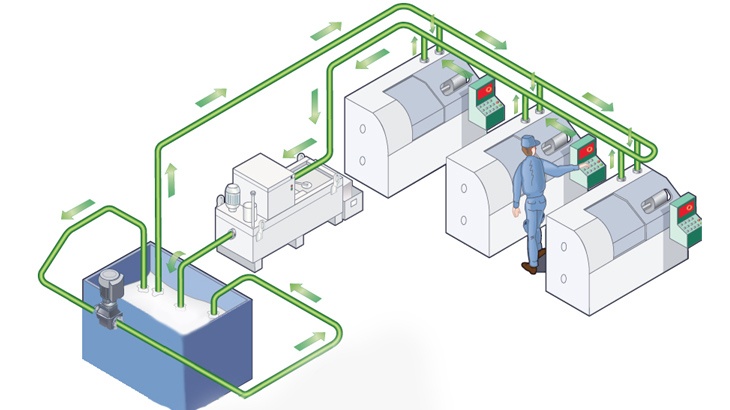Maintenance of the process fluid is complex, and each system has its own requirements. We have listed the seven most important points to consider.
1. Cleaning
Cleaning is an important factor in avoiding bacteria. Some machines are very difficult to clean and in other cases there may be equipment in the road that is broken or not used - remove it to make it easier to maintain.
Cleaning the chip conveyor is important to make the fluid pass. This can be difficult, but it is very important that the cutting fluid should have a good function and a long service life.
At the cutting-edge break, or at least once a year, it is advisable to use high-pressure coil pipelines to eliminate flakes and coatings.
2. Concentration of metalworking fluid
The metalworking fluid's concentration is crucial for its function and its service life as the right concentration produces the best relationship between the different components in the metalworking fluid. Measure via a refractometer value, TA content or total amount of oil or the methods in comb.
3. A stable pH
A stable pH produces:
- Reduced bacterial growth
- Retained rust protection
- Uniform oil droplet size
4. A stable temperature
Large temperature differences can produce tolerance problems in the production process. Each degree that the temperature rises increases the bacteria's rate of growth at the same time as the water evaporates faster. The temperature should be between 18 and 20˚C in an average system.
5. Take samples
Good maintenance requires continuous sampling, both internally and externally. The need to take samples varies from system to system, from three times a day to once a year.
We recommend measuring the concentration internally every 24 hours and then performing a bacterial analysis at least once a week. Remember to document all samples and measures!
6. Aerate and ensure it is free of tramp oil
To avoid growth of the worst bacteria the fluid must be aerated. For smaller systems it can be performed simply with a small aquarium pump.
Tramp oil is fertilizer for bacteria, and can also prevent aeration as it lies like a tight "lid" over the surface of the fluid. Separate the tramp oil with a skimmer, paper tape filter or other separator.
7. Check the filter
An indication that the paper in the paper filter is correct and is properly tied are the white edges. Never feed the paper manually, but leave it alone and do the job.
(JÖ)



Comment